
Evergreen Trees (Conifers), Vegetation Around Las Vegas
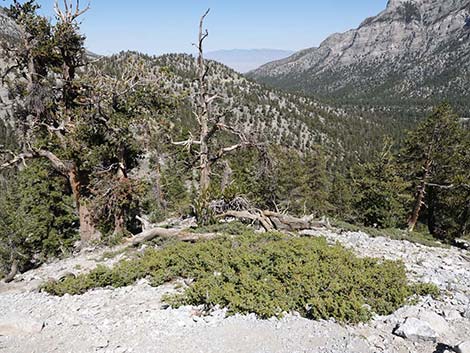 Prostrate shrub growing low to the ground |
General: Common Juniper (Juniperus communis) is a coniferous (cone-bearing) shrub with sharp, stout needles that radiate in all directions from the twigs (unlike other junipers). The cones are round berries about 1/4-inch in diameter. This species is most easily recognized by the low-growing, mat-like nature of the plant and the spiky needles. In Nevada, Common Juniper is an uncommon component of the montane vegetation in the Spring and Sheep mountains in the Canadian (Pine-Fir Forest) and Hudsonian (Bristlecone Forest) life zones. Family: Cypress (Cupressaceae). Other Names: |
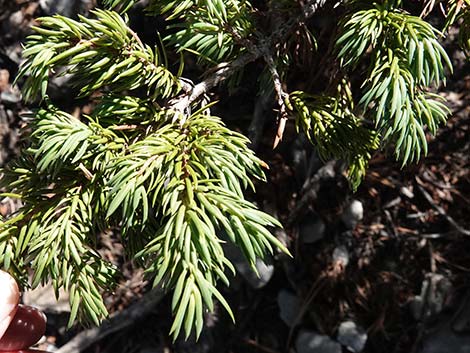 Needles awl-shaped: pointed, stiff, to 0.5 in long |
Plant Form: Low, spreading shrub. Height: To 2-3 feet tall. Trunk: Short. Bark: Reddish brown, scaly or peeling in papery sheets. Branches: Grow along the ground, twisted, stiff. Branchlets 3-dimensional (not flattened). Needles: Needle-shaped, pointed, stiff, to 0.5 in long; whorls of 3, 6-ranked; white band above, dark green below; spreading at right angles to the branchlets. |
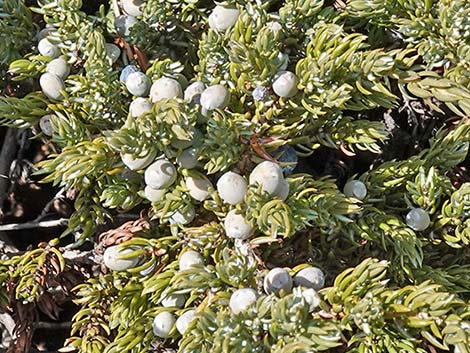 Green, unripe berries |
Cones: Berry, green, maturing to bright blue or black, 1/5-to-1/3-inch diameter, set at junction of leaves and branchlets, resinous. Seeds: 1–3 per cone; 2–5 mm. Habitat: Rocky and wooded mountain slopes. Elevation: 6,200 to 11,200 feet. Distribution: Northern Hemisphere around the world. Around Las Vegas, a few, scattered individuals can be found in the Spring and Sheep Mountains. They are more common to the north. Comments: Common Juniper (Juniperus communis) is a northern species that occurs across northern North America south of the tundra. This species is uncommon around Las Vegas, but scattered patches can be found in the Spring and Sheep Mountains. In the Spring Mountains, this species can be most easily seen along the Bristlecone and Mummy Spring trails. It can also be found on Harris Mountain. |
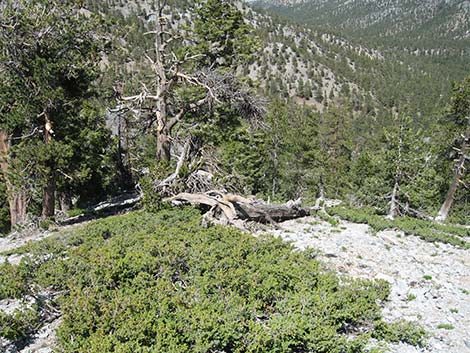 |
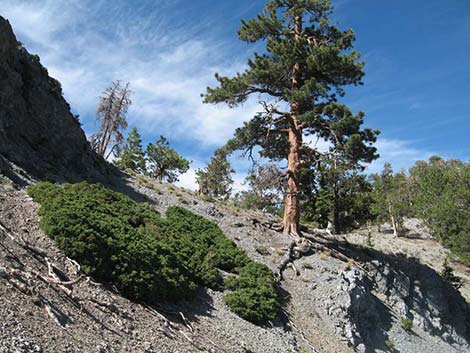 |
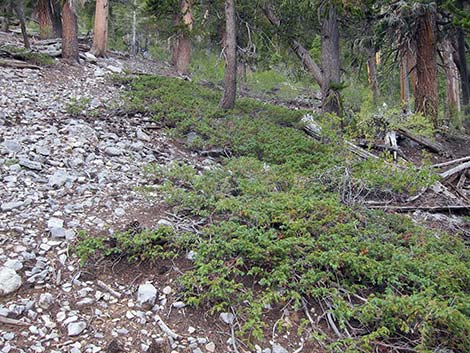 |
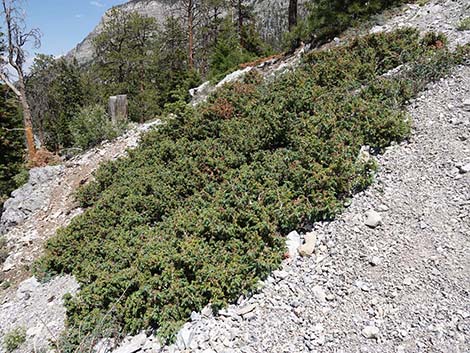 |
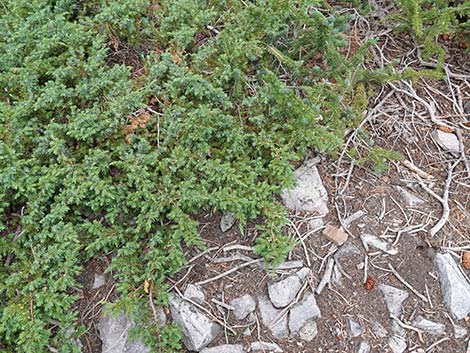 |
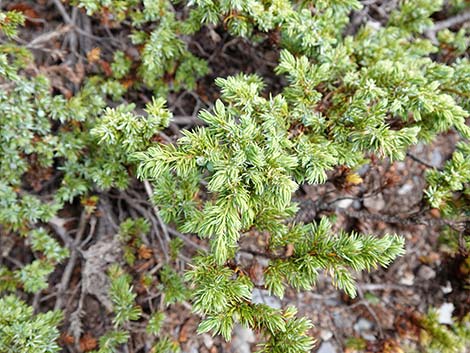 |
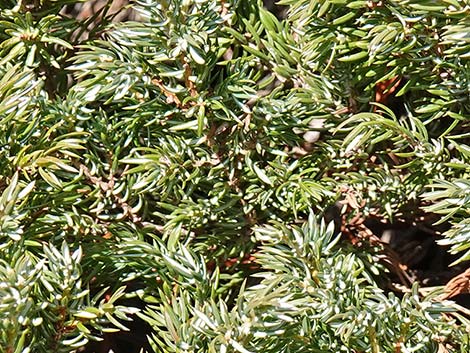 |
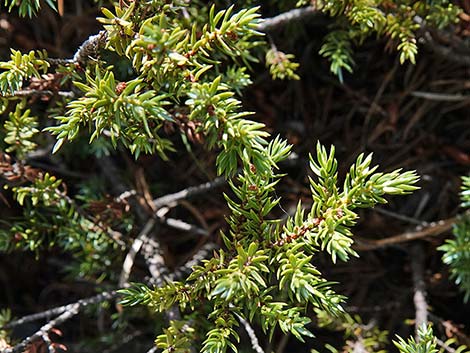 |
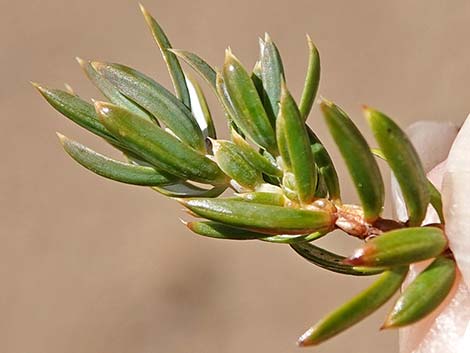 Fresh leaves are stout, short, and sharp |
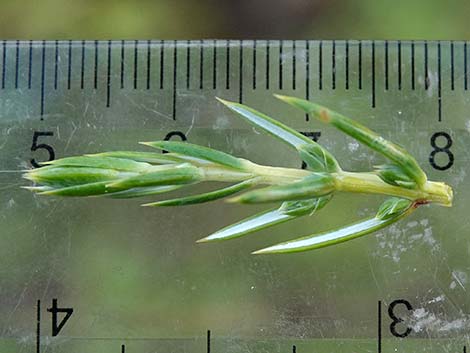 Fresh leaves are stout, short, and sharp, in whorls of 3 |
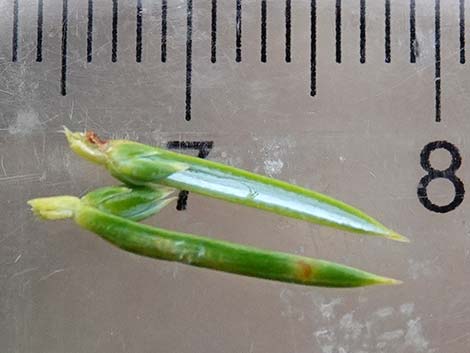 Fresh leaves, dorsal and ventral surfaces |
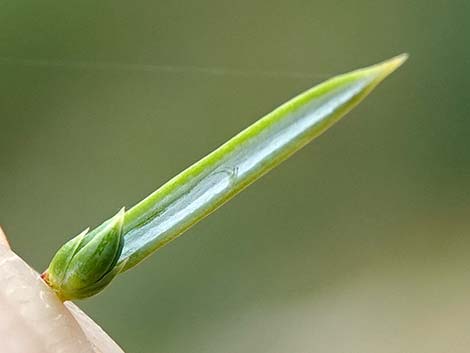 Fresh leaf, dorsal surface with white band |
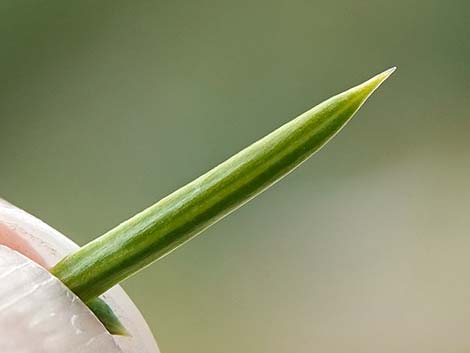 Fresh leaf, ventral surface dark green |
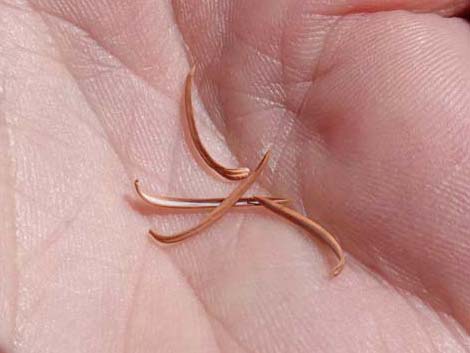 Dried leaves dessicate to a smaller diameter than expected |
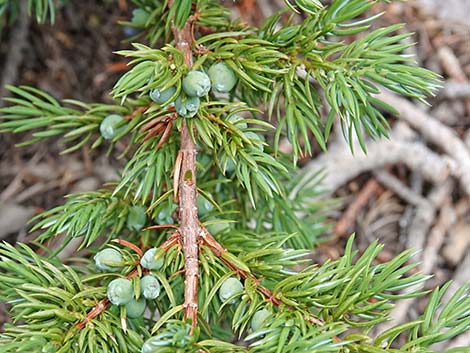 Leaves and unripe cones |
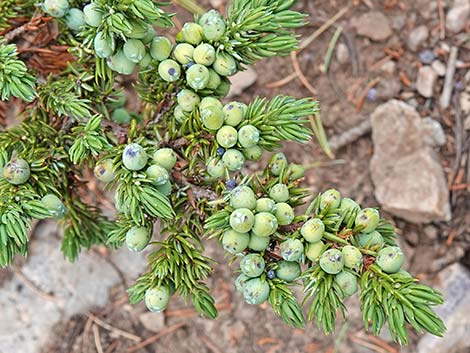 Unripe cones |
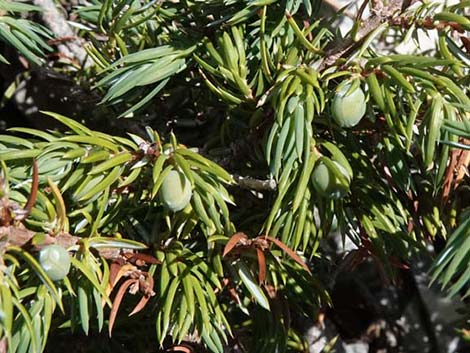 Leaves and unripe cones |
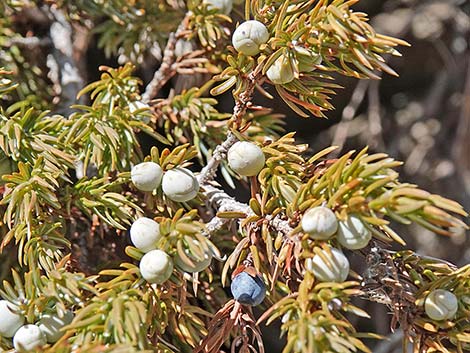 Leaves during fall with ripe and unripe cones |
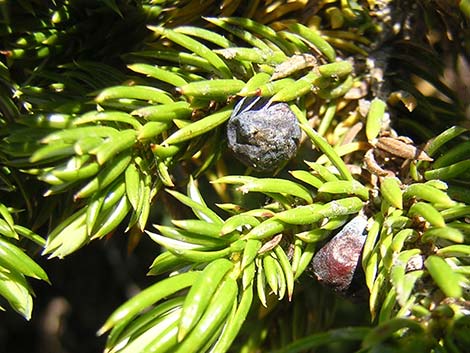 Two ripe cones |
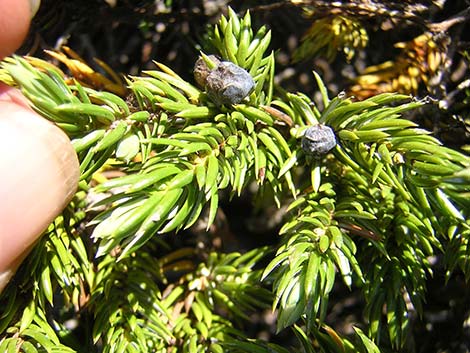 Two ripe cones |
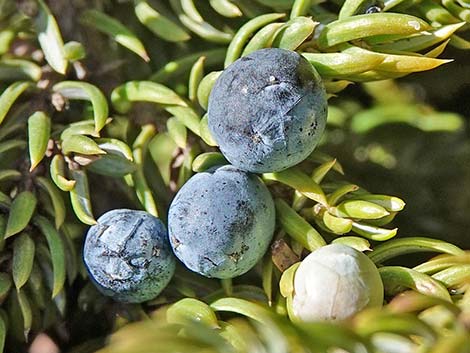 Three ripe cones and one unripe cone |
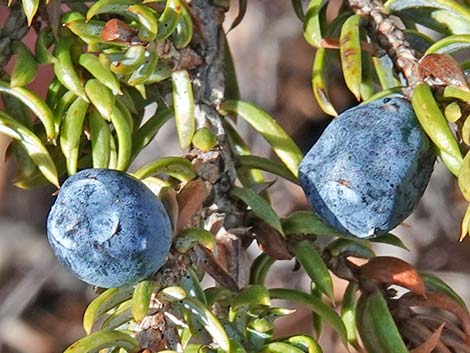 Ripe cones on the tree |
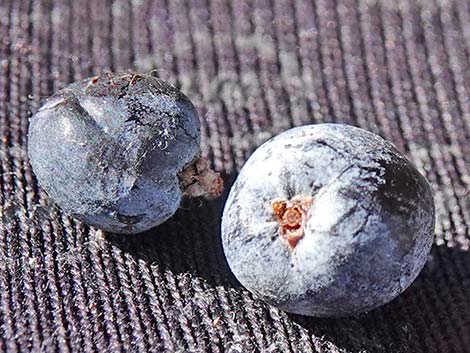 Ripe cones in the hand |
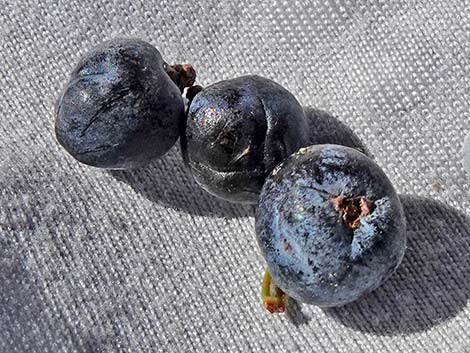 Ripe cones in the hand |
Note: All distances, elevations, and other facts are approximate.
![]() ; Last updated 240903
; Last updated 240903
| All Conifers | Plant Species Index | Glossary | Copyright, Conditions, Disclaimer | Home |